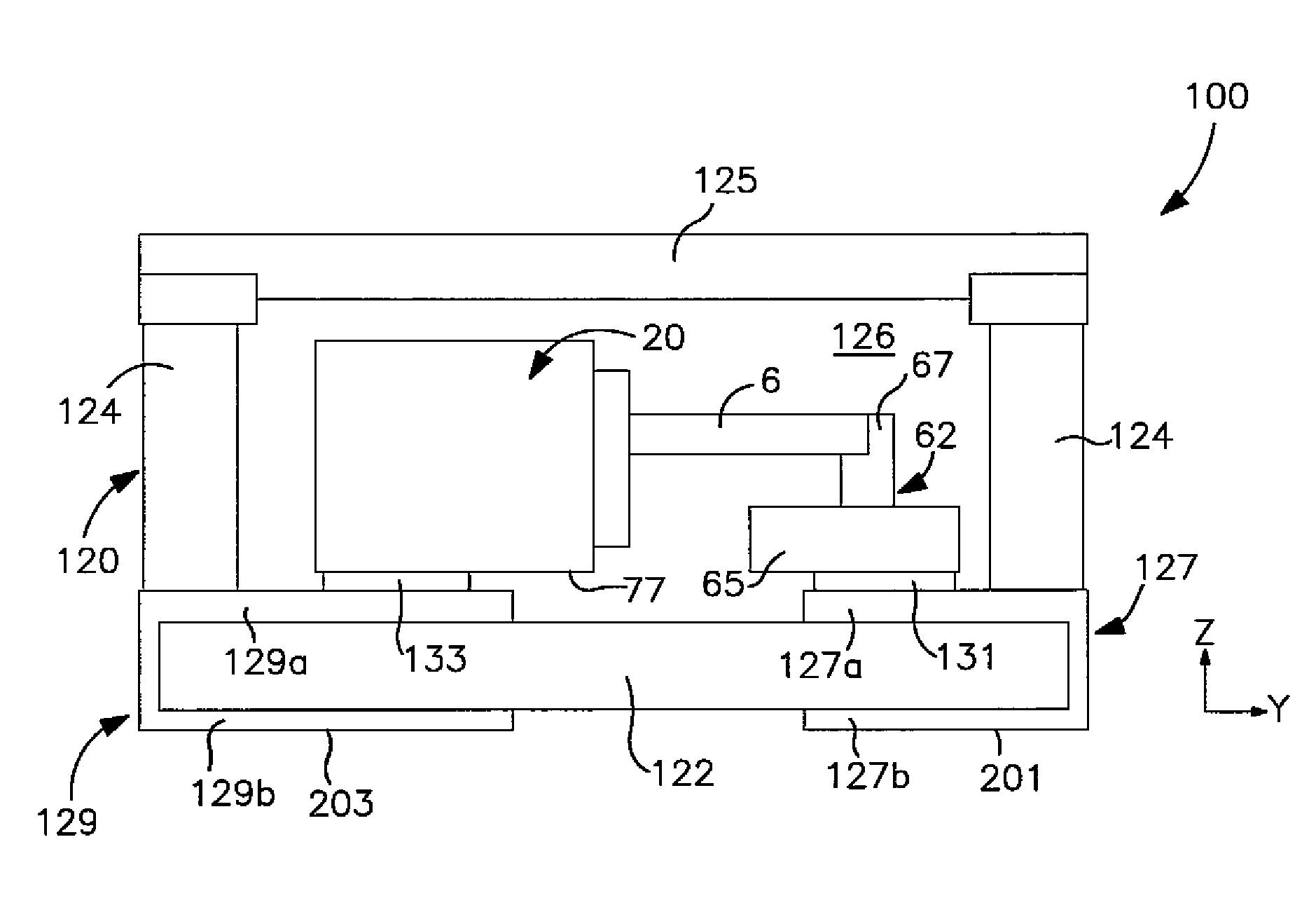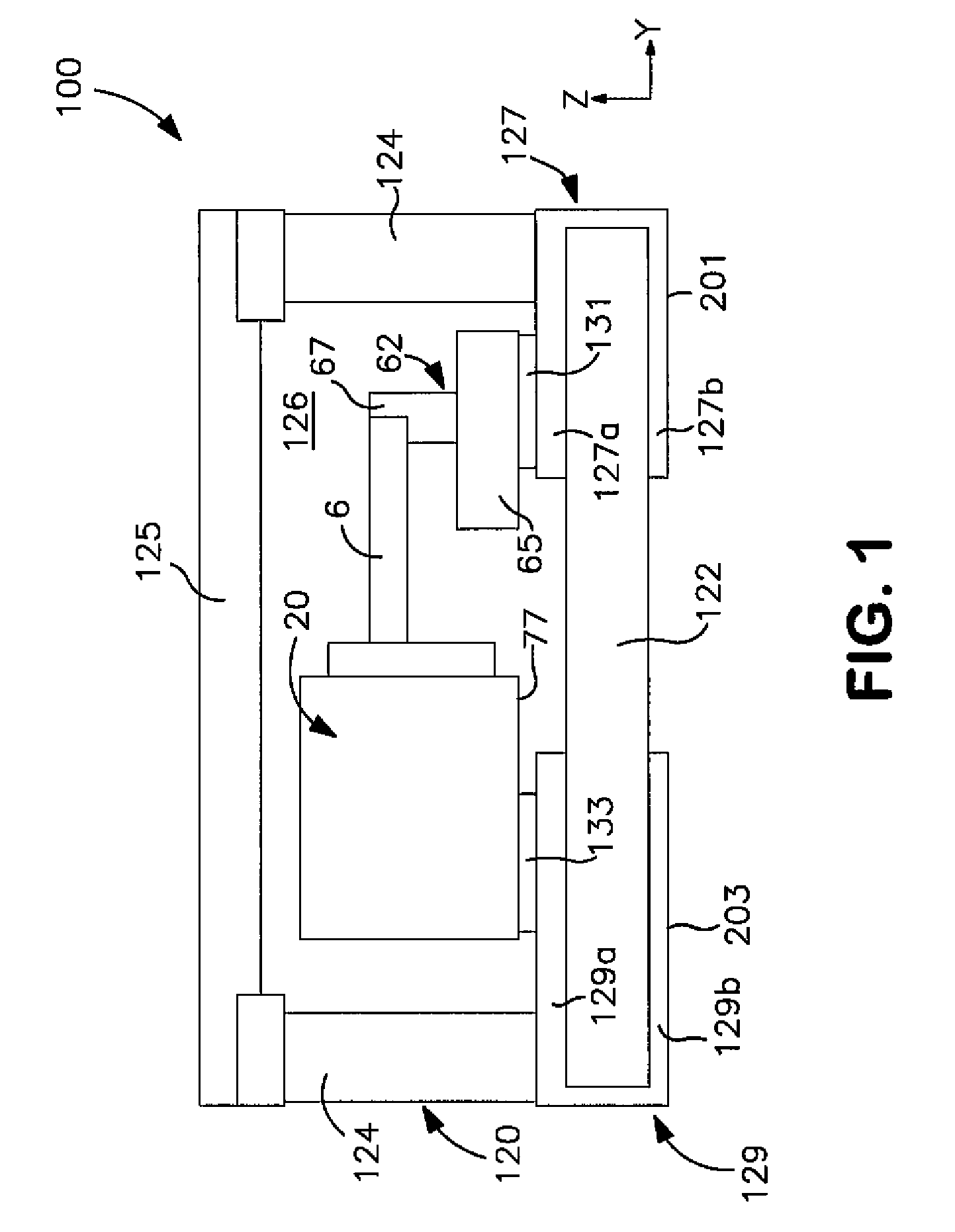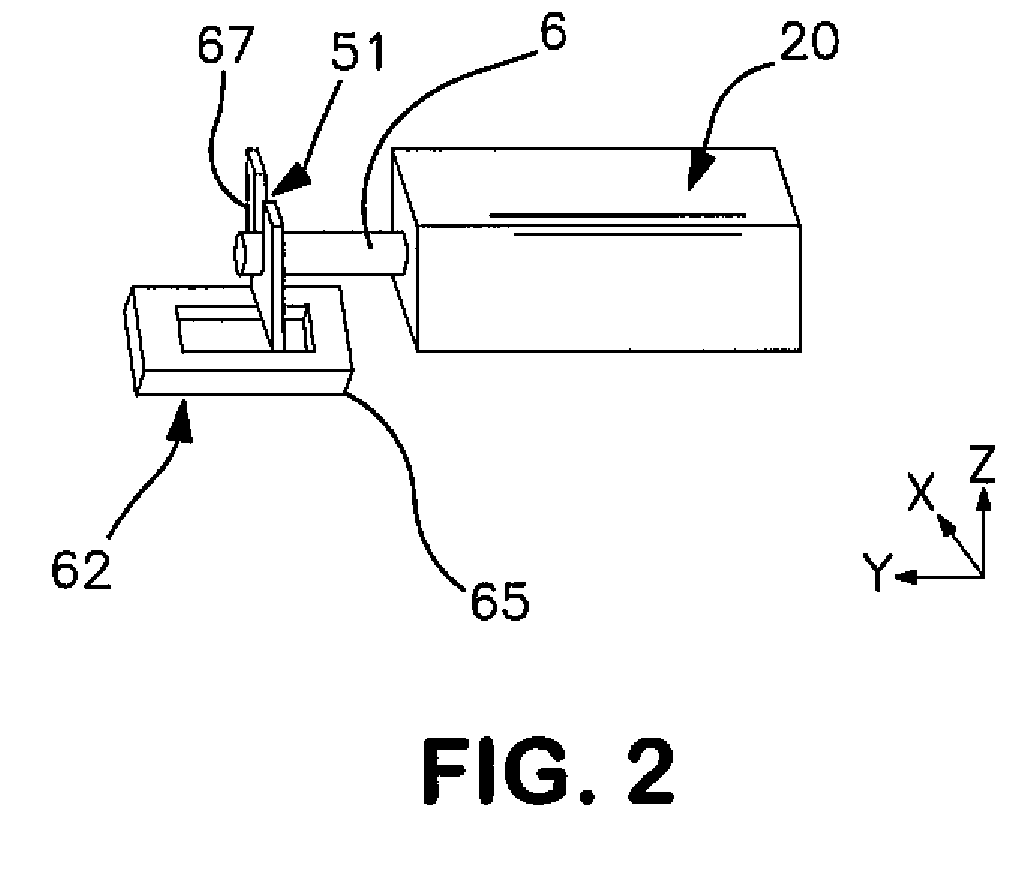Hermetically sealed capacitor assembly
a capacitor and hermetically sealed technology, applied in the direction of liquid electrolytic capacitors, casings/cabinets/drawers, casings/cabinets/drawers details, etc., can solve the problems of poor stability of solid electrolytes at high temperatures, performance degradation, and conductivity reduction
- Summary
- Abstract
- Description
- Claims
- Application Information
AI Technical Summary
Benefits of technology
Problems solved by technology
Method used
Image
Examples
example
[0064]Initially, 100 capacitor element samples were formed from tantalum anodes having a size of 1.65×2.70×2.85 mm. Each anode was embedded with a tantalum wire, sintered at 1500° C., and pressed to a density of 5.3 g / cm3. To anodize the tantalum anode, it was dipped into an orthophosphoric acid / water solution having a conductivity of 8.6 mS / cm and temperature of 85° C. Fifty (50) of the samples were then dipped sequentially into a solution of iron(III) p-toluenesulfonate solution in n-butanol (CLEVIOS CB40, H.C. Starck) and into a solution of 3,4-ethylenedioxythiophene (CLEVIOS M, H.C. Starck) and polymerized to achieve a PEDOT conductive polymer cathode. The remaining fifty (50) samples were dipped into a conventional aqueous solution of manganese(II) nitrate and dried to achieve an MnO2 cathode. All one hundred (100) parts were then dipped sequentially into a graphite dispersion and in a silver dispersion and dried.
[0065]The tantalum wire of each of the resulting capacitor elemen...
PUM
| Property | Measurement | Unit |
|---|---|---|
| density | aaaaa | aaaaa |
| density | aaaaa | aaaaa |
| density | aaaaa | aaaaa |
Abstract
Description
Claims
Application Information
 Login to View More
Login to View More - R&D
- Intellectual Property
- Life Sciences
- Materials
- Tech Scout
- Unparalleled Data Quality
- Higher Quality Content
- 60% Fewer Hallucinations
Browse by: Latest US Patents, China's latest patents, Technical Efficacy Thesaurus, Application Domain, Technology Topic, Popular Technical Reports.
© 2025 PatSnap. All rights reserved.Legal|Privacy policy|Modern Slavery Act Transparency Statement|Sitemap|About US| Contact US: help@patsnap.com



